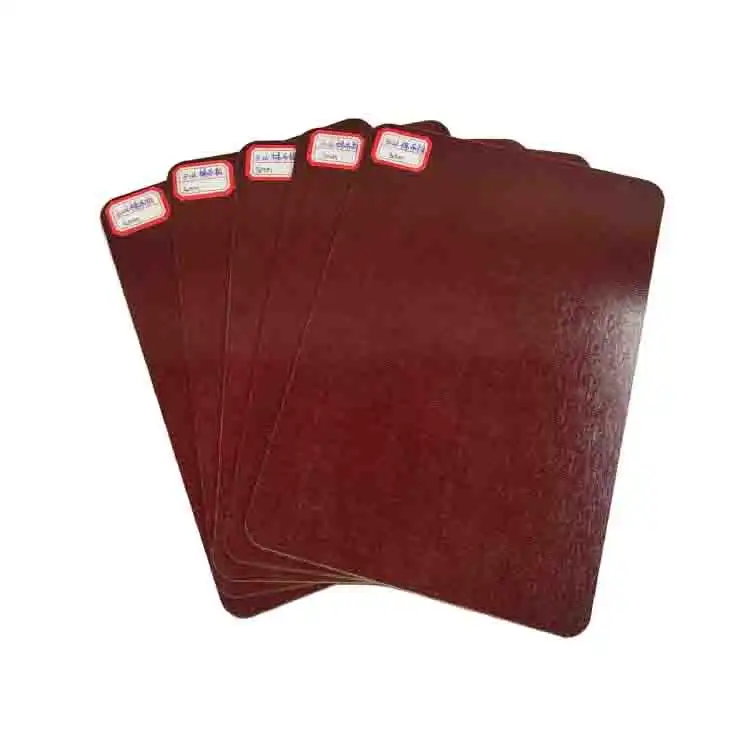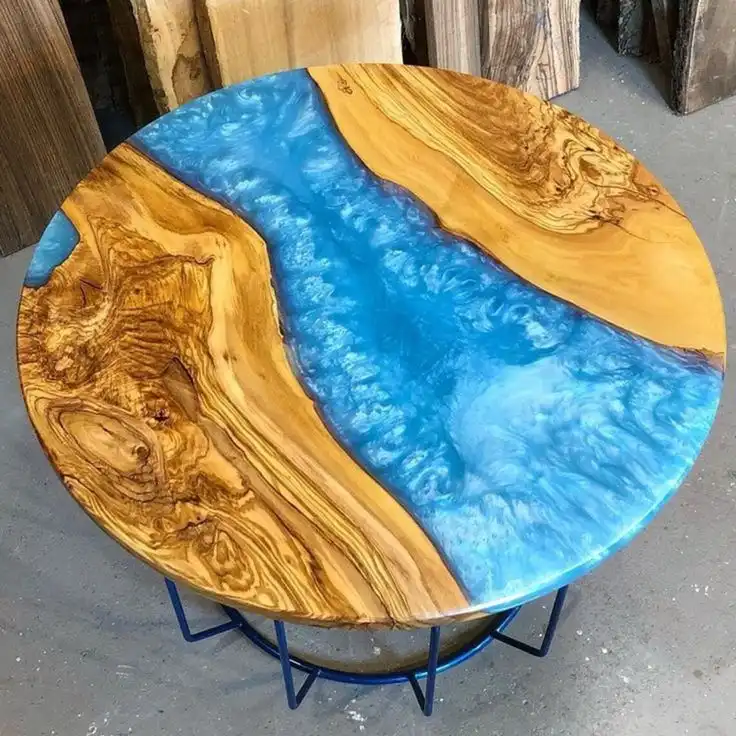Are there any Limitations to Using NEMA Grade L Phenolic Cotton Board?
2025-03-28 17:05:42
While NEMA Grade L phenolic cotton board offers a compelling combination of mechanical strength, electrical insulation, and machinability, it's crucial to acknowledge its limitations. Like all materials, it's not a universal solution. Its performance can be affected by prolonged exposure to high temperatures, certain chemicals, and high-humidity environments. Furthermore, while it possesses good dielectric strength, it may not be suitable for extremely high-voltage applications. Understanding these constraints is paramount to ensuring the material's successful and long-lasting performance in your specific manufacturing application. Selecting the right material always involves a careful consideration of trade-offs, and NEMA Grade L is no exception. Let's delve into the specifics.
Applications and Suitability
NEMA Grade L phenolic cotton board, also sometimes referred to as "linen phenolic," is a thermoset composite material. It's created by applying heat and pressure to layers of cotton fabric impregnated with phenolic resin. This process results in a dense, rigid material with a unique set of properties.
Ideal Use Cases
This material shines in applications requiring a balance of mechanical and electrical properties. Some common examples include:
- Electrical Insulation: Its good dielectric strength and arc resistance make it suitable for components like terminal boards, insulating washers, and spacers in low to medium voltage electrical equipment.
- Mechanical Components: Its strength and dimensional stability make it a good choice for gears, pulleys, rollers, and other mechanical parts that require wear resistance and moderate load-bearing capacity.
- Machined Parts: The fine weave of the linen reinforcement allows for intricate machining and close tolerances, making it ideal for creating custom components.
When to Consider Alternatives
While versatile, there are situations where NEMA Grade L phenolic cotton board might not be the optimal choice:
- High-Temperature Environments: Continuous exposure to temperatures exceeding its maximum operating temperature (typically around 125°C - 150°C, depending on the specific formulation) can lead to degradation, dimensional changes, and loss of mechanical properties.
- High-Voltage Applications: While it provides good insulation, it's generally not recommended for extremely high-voltage applications where materials like G-10 or G-11 glass-epoxy laminates would be more appropriate.
- Extreme Chemical Exposure: Prolonged exposure to strong acids, alkalis, or certain organic solvents can degrade the phenolic resin, compromising the material's integrity.
Comparing to Other NEMA Grades
It's helpful to understand where NEMA Grade L fits within the broader family of NEMA laminates:
- Grade C: Uses a coarser canvas reinforcement, offering higher impact strength but lower machinability and a rougher surface finish.
- Grade CE: Similar to Grade C but with improved electrical properties.
- Grade LE: Similar to Grade L but with enhanced electrical properties for more demanding electrical applications.
- Grade G-10/FR-4:These utilize fiberglass cloth and epoxy resin, offering much high strength, temprature resistance and excellent electrical properties,especially in humid conditions.
Environmental Factors and Degradation
Understanding how environmental conditions affect NEMA Grade L phenolic cotton board is crucial for predicting its long-term performance and lifespan.
Moisture Absorption and its Effects
Phenolic laminates, including Grade L, are hygroscopic, meaning they absorb moisture from the surrounding environment. While the absorption rate is relatively low for Grade L compared to some other materials, prolonged exposure to high humidity can still have consequences:
- Dimensional Changes: Moisture absorption can cause slight swelling, which may be critical in applications requiring tight tolerances.
- Reduced Electrical Properties: Moisture can decrease the material's dielectric strength and increase its dissipation factor, potentially leading to electrical leakage or failure.
- Potential for Mold Growth: In consistently damp environments, the organic cotton reinforcement can become susceptible to mold and mildew growth, further degrading the material.
Temperature Limitations
As mentioned earlier, exceeding the maximum operating temperature is a significant limitation. The effects of excessive heat include:
- Softening and Deformation: The phenolic resin will begin to soften at elevated temperatures, leading to a loss of dimensional stability and mechanical strength.
- Outgassing: At very high temperatures, the material may release volatile organic compounds (VOCs), which can be a concern in enclosed environments.
- Charring and Decomposition: In extreme cases, prolonged exposure to excessive heat can cause the material to char and decompose, rendering it unusable.
Chemical Resistance Considerations
While NEMA Grade L exhibits good resistance to many common chemicals, it's not impervious to all substances.
- Resistant to: It generally performs well in the presence of oils, greases, and many common solvents.
- Vulnerable to: Strong acids, strong alkalis, and some oxidizing agents can attack the phenolic resin, causing it to break down and lose its structural integrity.
- Specific Chemical Compatibility: Always consult a chemical resistance chart or conduct testing to ensure compatibility with specific chemicals in your application.

Machining and Fabrication Challenges
While NEMA Grade L phenolic cotton board is prized for its machinability, there are still some potential challenges to be aware of during fabrication.
Tool Wear and Selection
The abrasive nature of the cotton reinforcement can cause accelerated tool wear, especially when using standard high-speed steel (HSS) tools.
- Carbide Tooling: Carbide-tipped tools are highly recommended for machining NEMA Grade L, as they offer significantly longer tool life.
- Diamond Tooling: For very high-volume production or extremely intricate machining, diamond tooling may be a worthwhile investment.
- Sharp Tools are Crucial: Maintaining sharp cutting edges is essential to prevent chipping, cracking, and delamination of the material.
Dust Control and Safety
Machining phenolic laminates generates fine dust that can be a respiratory irritant and a potential health hazard.
- Effective Dust Collection: A robust dust collection system is essential to capture the dust at the source and prevent it from spreading throughout the workshop.
- Respiratory Protection: Workers should wear appropriate respiratory protection, such as a dust mask or respirator, to avoid inhaling the dust.
- Eye Protection: Safety glasses or a face shield should be worn to protect the eyes from flying particles.
Preventing Delamination and Chipping
Improper machining techniques can lead to delamination (separation of the layers) or chipping of the material.
- Appropriate Feed Rates and Speeds: Using excessively high feed rates or cutting speeds can increase the risk of delamination.
- Proper Clamping and Support: Securely clamping the material and providing adequate support during machining will help to prevent vibration and minimize the risk of chipping.
- Climb Milling: Where possible, using a climb milling technique (where the cutter rotates in the same direction as the feed) can help to reduce chipping and improve surface finish.
Conclusion
NEMA Grade L phenolic cotton board presents a valuable option for manufacturers seeking a balance of mechanical strength, electrical insulation, and excellent machinability. However, recognizing its limitations concerning temperature, humidity, chemical exposure, and machining considerations is critical. By carefully evaluating these factors and comparing them to the specific demands of your application, you can determine if NEMA Grade L is the right choice or if an alternative material would be more suitable. Proper material selection, coupled with best practices in fabrication and environmental control, will ensure optimal performance and longevity. Thoroughly assessing these aspects will empower you to make informed decisions and achieve the best possible results in your manufacturing processes.
Contact Us
Ready to explore if NEMA Grade L phenolic cotton board is the right solution for your manufacturing needs? With over 20 years of experience in producing and supplying insulating materials, J&Q is here to help. Contact us today at info@jhd-material.com to discuss your specific requirements and receive expert guidance.
References
1. National Electrical Manufacturers Association. NEMA Standards Publication LI 1-1998 (R2011): Industrial Laminated Thermosetting Products.
2. Rosato, D. V., Rosato, D. V., & Rosato, M. G. (2004). Plastic product material and process selection handbook. Elsevier.
3. Harper, C. A. (2006). Handbook of plastics, elastomers, and composites. McGraw-Hill.
4. ASM Handbook Committee. Engineered Materials Handbook, Desk Edition. ASM International, 1995.
5. Strong, A. Brent. Plastics: Materials and Processing. 3rd ed., Prentice Hall, 2006.
6. Chanda, Manas, and Salil K. Roy. Plastics Technology Handbook. CRC Press, 2006.







